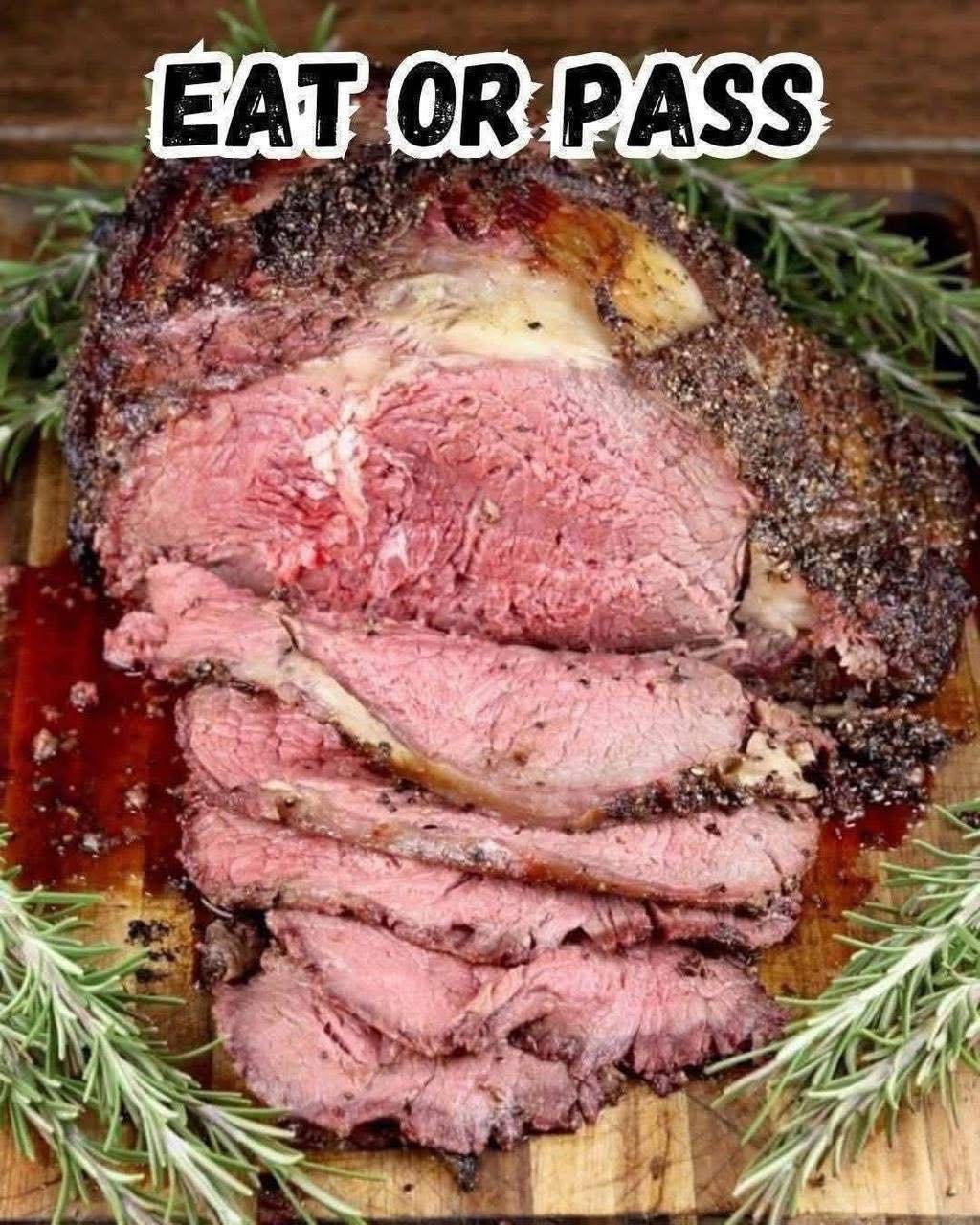Step 1: Prep the Roast (3-4 Hours Before Cooking)
- Remove the roast from its packaging. Pat it completely dry with paper towels.
- If your butcher hasn’t done so, remove the bones (they will be re-attached). Use a sharp knife to cut the bones away from the meat in one piece, following the contour of the ribs. Set the bones aside.
· Why? This makes carving incredibly easy after cooking. It also allows you to season the meat on all sides. - Using kitchen twine, tie the bones back onto the bottom of the roast. The bones act as a natural roasting rack.
- Let the roast sit on the counter, uncovered, for 3-4 hours to come to room temperature.
Step 2: Season and Preheat
- Preheat your oven to 225°F (107°C). This low temperature is key for even cooking.
- In a small bowl, mix the softened butter, minced garlic, chopped herbs, salt, and pepper into a paste.
- Rub this herb paste aggressively over every surface of the roast, including the sides and ends.
Step 3: The Low & Slow Roast
- Place the roast, bone-side down, in a roasting pan. You can place it on a wire rack inside the pan if you have one.
- Insert an oven-safe probe thermometer (if you have one) into the very center of the roast, making sure not to touch bone or fat.
- Roast at 225°F (107°C) until the internal temperature is 10-15°F (5-8°C) below your desired final temperature (see chart below). This will take approximately 3.5 to 4.5 hours for a 10 lb roast. DO NOT rely on time; rely on the thermometer.
Step 4: The Blast of Heat (The Sear)
- Once the roast hits your target temp, take it out of the oven. Tent it loosely with foil.
- Increase the oven temperature to 500°F (260°C). Let the oven get fully hot.
- Remove the foil and place the roast back into the extremely hot oven.
- Roast for 10-20 minutes, watching closely, until the exterior is beautifully browned, crispy, and sizzling.
- Remove from the oven. The internal temperature will have risen into the perfect range.
Step 5: The Crucial Rest
- Transfer the prime rib to a cutting board. Tent it loosely with foil.
- Let it rest for at least 30 minutes, and up to 45 minutes for a large roast. This is not optional. The juices need time to settle.
Step 6: Carve and Serve
- Cut the twine and remove the bones (they should come off cleanly). Slice the bones into individual ribs for gnawing.
- Using a long, sharp carving knife, slice the roast into ½ to 1-inch thick slices.
- Serve immediately with au jus, horseradish sauce, or Yorkshire puddings.
Doneness Temperature Chart (Internal Temp Before the High-Heat Sear)
Doneness Remove from Oven at… Final Temp after Searing & Resting
Rare 115-120°F (46-49°C) 125-130°F (52-54°C)
Medium Rare (Recommended) 120-125°F (49-52°C) 130-135°F (54-57°C)
Medium 130-135°F (54-57°C) 140-145°F (60-63°C)
Note: The temperature will rise during the high-heat sear and during resting (carryover cooking).
Pro Tips for the Best Prime Rib:
· Buy Ahead & Dry-Age (Optional): For an even more robust flavor, place the unwrapped roast on a wire rack set over a baking sheet in the fridge for 1-4 days before cooking. This will dry the surface, leading to a better crust.
· Simple Au Jus: While the roast rests, place the roasting pan on the stovetop over medium heat. Add 1-2 cups of red wine or beef broth and scrape up all the browned bits. Simmer for a few minutes, strain, and serve.
· Horseradish Cream Sauce: Mix 1 cup sour cream, ¼ cup prepared horseradish (drained), 1 tbsp Dijon mustard, and salt/pepper. Chill for 1 hour.
· No Probe Thermometer? Use an instant-read thermometer to check the temperature during the last hour of cooking. Check in a few spots to ensure accuracy.
Enjoy your masterpiece! A perfectly cooked prime rib is a show-stopping, unforgettable meal.

